 [[“value”:”
[[“value”:”
ENB Pub Note: This is a huge win for Colorado and a great friend of the Energy News Beat Podcast, Doug Sandridge. This article was first published on Doug’s Substack: https://douglascsandridge.substack.com/. We highly recommend reading and subscribing to his article. He also references former Miss America, Grace Stanke’s involvement, and several other great groups helping. I have had the honor to interview Grace twice, and Doug several times. Congratulations Colorado on a huge win today.
On Monday, Colorado Governor Jared Polis signed HB25-1040, which defines nuclear energy as “clean energy” under the Colorado Revised Statutes. “If the state is serious about reducing carbon emissions, we need to look at all viable alternatives,” Polis previously told The Denver Gazette. To the casual observer, passage of this simple, yet historic, bill might appear to be a trivial matter. However, great accomplishments often begin with small gestures. Defining nuclear energy as clean energy in Colorado has been a long and painful ordeal. Nevertheless, passage of HB25-1040 is the first small step in Colorado’s tortured journey towards energy sobriety.
Historically, Colorado has been a powerhouse of energy and mineral extraction. Colorado has been a significant producer of coal, crude oil, natural gas and uranium for the past century. As recently as six years ago, Colorado was the fifth largest producer of crude oil and the eighth largest producer of natural gas. Colorado is currently the 3rd largest producer of uranium and the 10th largest producer of coal. At one time, a commercial nuclear power plant1 was located near Platteville, Colorado. Notwithstanding, in recent years, Colorado’s energy and climate policies have become seriously flawed.
A mere ten years ago, Colorado was a quintessential western “purple state.” Colorado was equally likely to have elected a Republican Governor or a Democratic Governor. It was not unusual for Colorado to have one Democratic Senator and one Republican Senator. Almost always, Colorado’s elected officials were moderate and pragmatically positioned near the center of the political spectrum, regardless of which party they represented.
However, about a decade ago, the political landscape in Colorado began a rapid and drastic transformation. Colorado started to see a rapid growth of its population, fueled by an avalanche of people re-locating from other states. Many of those new Colorado residents brought with them progressive political ideologies about climate and energy. Colorado’s current political landscape looks more like California or Oregon than the pragmatic political landscape which has historically been the hallmark of Colorado politics.
Perhaps the most visible and impactful changes in public policy have revealed themselves in the transformation of Colorado’s energy and climate policies. Colorado has adopted very aggressive regulations to reduce CO2 emissions. Governor Polis campaigned on a “bold” platform of achieving 100% Renewable Energy by 2040. These audacious Colorado policy goals will result in the premature closing of all of Colorado’s coal-fired electricity generating stations.
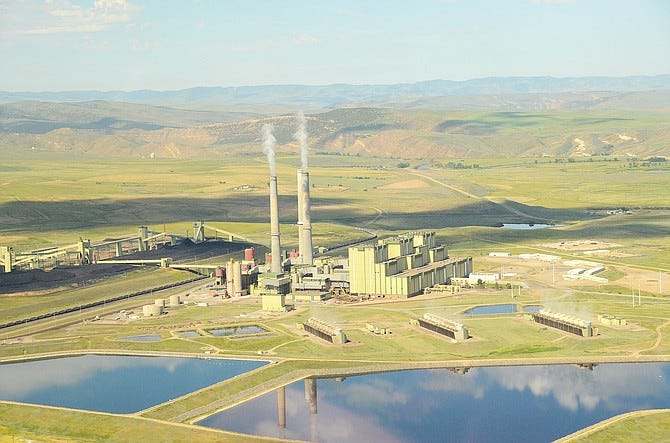
Coal-Fired Electricity Generating Plant in Craig, Colorado
Colorado has effectively mandated that all of the State’s coal-fired electricity generating plants must be shuttered by 2031, without a coherent plan of how to replace the safe, reliable and affordable electricity which is currently generated by these coal plants. A Denver attorney and solar developer told Energy Ruminations that “……not only does Colorado not have a coherent transition plan, Colorado doesn’t even have an incoherent plan of how to replace coal-fired electricity…. only delusional aspirations.”
“We have a date, but we don’t have a plan!”
Matt Solomon, Project Manager for Northwest Colorado Energy Initiative (speaking in reference to Colorado’s plan to shut down all of its coal-fired electricity generation without a viable plan how to replace the power)
In 2021, at an intimate meeting with a major Colorado utility, a senior executive was asked how his company was planning to meet the demand for electricity in Colorado once the coal-fired generation has been prematurely shuttered? The senior executive’s candid (paraphrased) response was, “We have no “f@#king idea how we are going to replace the power! Colorado is forcing us to pre-maturely shut-down our coal plants without any apparent serious consideration about how to replace the electricity from those coal plants!”
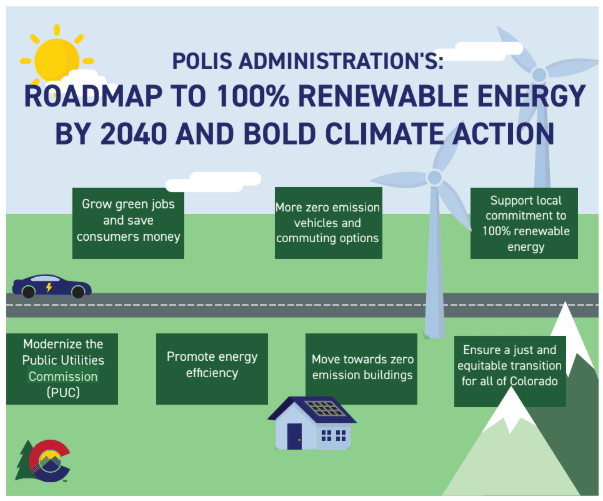
Nevertheless, Colorado utility customers have been repeatedly told that the electricity currently derived from coal will be replaced with massive amounts electricity produced from wind, solar, and geothermal. It is not readily apparent whether the policymakers who attempt to placate the public with this nonsense actually believe the fantasy that wind, solar, and geothermal can replace Colorado’s cherished safe, reliable and affordable electricity by the time the coal plants are closed circa 2030. Some political insiders seem to rationally understand that wind, solar, batteries and geothermal will not be Colorado’s solution; nevertheless, the policymakers appear willing to continue misleading the public with this reverie, perhaps because they hope it will buy them time to figure out a viable solution.
Either way, the closure of the Colorado coal-fired electricity generation is a freight train careening towards the abyss of expensive, unreliable electricity. While a meaningful percentage of Coloradans seem to support the broad idea of transitioning away from coal, the lion’s share of the public would prefer an orderly transition as opposed to the chaos created from the premature closure of the coal-fired electricity generation, without a viable plan of transition. For a growing number of pragmatic energy realists, an orderly transition could manifest itself in the form of nuclear power plants constructed at the sites of existing coal plants.
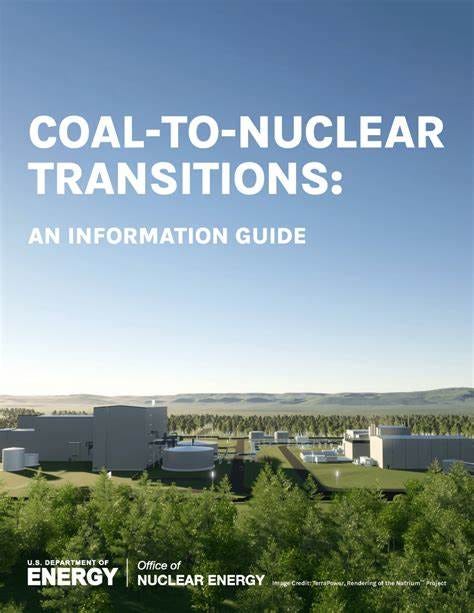
Such an orderly transition from coal to nuclear would leverage the economic advantages of using existing power transmission infrastructure already installed at the sites of the coal-fired plants. An orderly transition from coal to nuclear could also provide an opportunity for local coal plant workers to re-train as nuclear power plant employees and continue working at generational, well-paying jobs in their respective communities. An orderly transition from coal to nuclear could also allow communities with coal-fired plants to avert economic collapse resulting from the premature closure of their coal-fired power plants.
Colorado policymakers continually espouse “A just and equitable transition for all of Colorado.” However, their words do not match their actions. Most policymakers have heretofore appeared uninterested in an orderly transition from coal to nuclear and seem callously unconcerned about the communities which are about to be devastated by the premature closure of the coal-fired power plants.
Fortuitously, there is an emerging groundswell of support for nuclear energy to replace coal in Colorado. There have been a few brave politicians, most notably Colorado State Senator Larry Liston, who have attempted to change the dialog about nuclear energy in Colorado. Grassroots advocacy groups have started to emerge in Colorado in support of nuclear energy. In early 2023, a nuclear advocacy organization was founded, which would eventually be branded as the Colorado Nuclear Alliance. A petroleum engineer named Mark Hinaman spearheaded the effort to organize the alliance in order to facilitate a robust public dialog about the potential benefits of nuclear energy in Colorado. The Colorado Nuclear Alliance was mentored by out-of- state nuclear advocates such as Mark Nelson of Radiant Energy Group, Paris Ortiz- Wines, Global Director of Stand Up for Nuclear, and Heather Hoff, co-founder of Mothers for Nuclear.
In 2023, Senator Liston introduced a modest bill in the Colorado Senate which would do nothing more than define nuclear energy as clean energy. The bill did not mandate nuclear to be constructed in Colorado. The bill did not advance any specific nuclear project or require Colorado to spend any money on nuclear energy, it simply put nuclear energy on the menu of clean energy options which could be considered by utilities and municipalities. One of the first things that the Colorado Nuclear Alliance undertook at its inception was to support Senator Liston’s 2023 bill.
Unfortunately, the Democratic Party in Colorado has historically been anti-nuclear. The Democratic National Platform endorses nuclear power. However, the Colorado Democratic State Platform has been historically unfavorable to nuclear energy. Therefore, it came as no surprise that the 2023 bill to define nuclear energy as clean energy was defeated in the Senate Committee along party lines by the super-majority of the Democratic Party.
In 2024, a similar bill to define nuclear energy as clean energy was again introduced by Senator Liston. Nuclear supporters from across the country came to Colorado to testify in support of Senator Liston’s bill. In fact, former Miss America, Grace Stanke paid for her own travel to Colorado to testify in-person in support of the bill. Many Colorado Nuclear Alliance members again testified in support of the 2024 bill. A few Democratic members of the Colorado Senate Transportation & Energy Committee courageously broke ranks and voted in-favor of the 2024 bill; nevertheless, the bill unfortunately failed to be approved by the Senate Transportation and Energy Committee.

Senator Liston and former Miss America Grace Stanke testifying in support of Colorado SB24-079 to define nuclear energy as clean energy.
After the second disappointing failure of a bill to define nuclear energy as clean energy, the Colorado Nuclear Alliance embarked on an aggressive effort to engage with and educate the Colorado congressional delegations and their respective staffs in order to build future support for nuclear energy.
On January 8, 2025 a new bill was introduced to define nuclear energy as clean energy in the Colorado Legislature. However, this year, HB25-1040 was co-sponsored in the House by Democratic Representative Alex Valdez and Republican Representative Ty Winter and co-sponsored in the Senate by Democratic Senator Dylan Roberts and Republican Senator Larry Liston. Bi-Partisan support of HB25-1040 did not guarantee a different result; nevertheless, it did add legitimacy to the bill and set a more positive tone for debate. Leading up to the legislative hearings, the Colorado Nuclear Alliance energetically engaged with State Senators and Representatives to enable them to better understand nuclear energy and the importance of safe, reliable and affordable energy in Colorado.
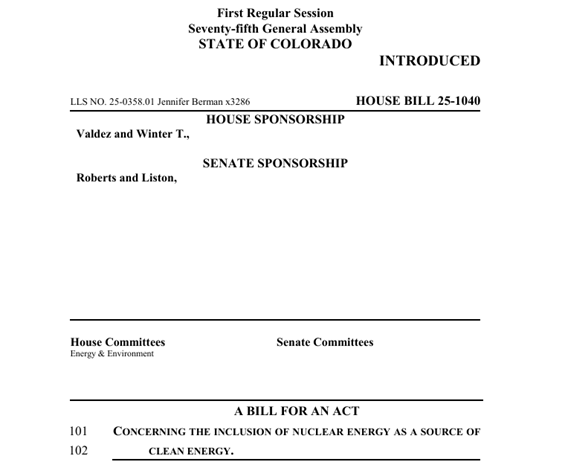
On February 13, 2025 the House Energy & Environment Committee heard testimony about HB25-1040. Approximately 90 people testified to the committee. About half of the testimony was given in favor of the bill and about half against the bill. Again, the bill enjoyed supporting testimony from trade unions, local communities and nuclear advocates from around the nation. Sixteen members of the Colorado Nuclear Alliance testified in support of HB25-1040. Testimony continued for over 6 hours. At 8:44 pm, the Colorado House Energy & Environment Committee passed HB25-1040 by a vote of 8-5, which was obviously enabled by the affirmative vote of several courageous Democrats. One week later, the bill was introduced to the full Colorado House of Representatives. After debate, the Colorado House of Representatives passed the HB25-1040 by acclamation!
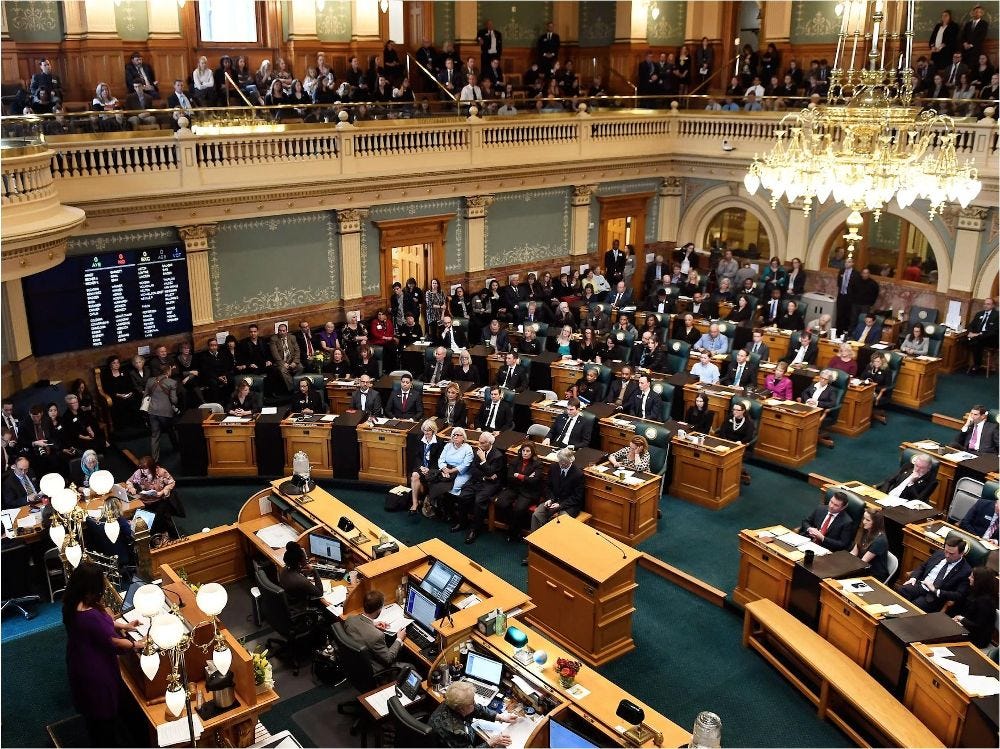
Colorado House of Representatives
After passage of HB25-1040 by the Colorado House of Representatives, the bill was referred for consideration by the Colorado Senate Transportation & Energy Committee. On March 10, 2025, the House Senate Transportation & Energy Committee heard testimony about HB25-1040. Approximately 70 people testified to the Committee. Testimony was again weighted approximately 50% in favor and 50% against the bill. Once again, the bill enjoyed supportive testimony from trade unions, local governments and nuclear advocates from around the nation. Thirteen members of the Colorado Nuclear Alliance testified at the Senate Committee Hearing in support of HB25-1040. Testimony continued for approximately 4 and one-half hours. Ultimately, the Colorado Senate Transportation & Energy Committee passed the bill by a vote of 6-3, which was again enabled by the affirmative vote of several courageous Democrats. On Friday, March 14th, HB25-1040 was introduced to the full Colorado Senate. After debate, the Colorado Senate passed the HB25-1040 by a remarkable vote of 29-5.
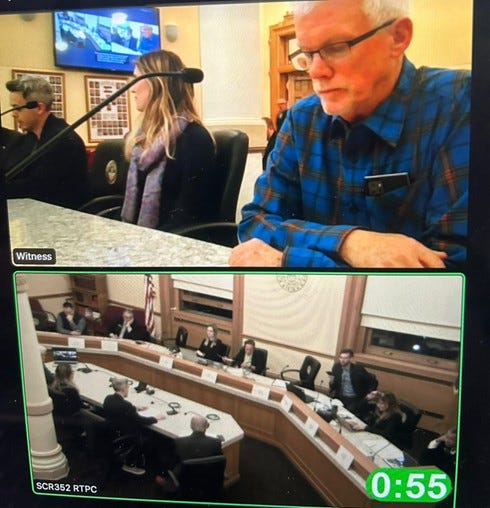
On March 31st, 2025, Jared Polis signed the HB25-1040 into law, validating that nuclear energy is definitively the bi-partisan issue of our time. HB25-1040 is simple and might not seem impactful to the casual observer. However, passage of the bill is important and symbolic for several reasons:
First, passage of HB25-1040 sends a loud and immediate message to the nation that Colorado is open for nuclear business. Construction of nuclear power plants in Colorado is not imminent. Nevertheless, passage of the bill by a wide margin of Senators and Representatives sends a powerful signal that Colorado could reemerge as a leader in nuclear energy development.
Secondly, passage of HB25-1040 by such a resounding legislative margin sends a powerful message across the nation that the fearmongering arguments in opposition to nuclear energy will no longer be heeded. Approximately half of the testimony given in the Colorado legislative hearings was given by opponents of nuclear energy, yet HB25-1040 ultimately passed by a wide margin indicating that all of the fearmongering and misinformation about nuclear energy will no longer serve as an effective tactic against nuclear energy.
Thirdly, passage of HB25-1040 dispels the myth that environmentalist oppose nuclear energy and supporters of nuclear energy are not environmentalist. This assertion that nuclear supporters are not environmentalists is a false and a patently unfair narrative. Everyone that testified in favor of passage of HB25-1040 seemingly considers themselves to be environmentalists. Most nuclear advocates in 2025, support nuclear energy, at least in part, for the undeniable benefits it provides to the environment and the reduction of carbon emissions!
Fourth and finally, passage of HB25-1040 sends a powerful message that honest, well- intentioned, grassroots advocacy can be effective. The Colorado Nuclear Alliance learned this lesson from the phenomenal nuclear advocates at Save Diablo Canyon and Stand Up for Nuclear who provided the inspiration and blueprint for how to engage in good-faith grass roots advocacy. The success of the pro-nuclear advocacy in Colorado should encourage advocates in other states and other countries to continue aggressively pursuing better pro-nuclear policies and statutes.
“That’s one small step for man, a giant leap for mankind.”
Neil Armstrong, July 20, 1969
The State of Colorado owes a dept of gratitude to many individuals and organizations for the support and perseverance in pursuit of HB25-1040 (too many to list here). Specifically, Colorado owes a debt of gratitude to Democratic Representative Alex Valdez, Republican Representative Ty Winter, and Democratic Senator Dylan Roberts who co-sponsored the bill. Colorado is especially grateful for Republican Senator Larry Liston, who introduced the bill three times and persevered until success was finally achieved. Colorado also owes a debt of gratitude to all of the courageous Colorado Senators and Representatives that were willing to put aside partisan politics in order to vote on the correct side of the clean nuclear energy issue.
The citizens of Colorado also owe thanks to the Colorado Nuclear Alliance, Save Diablo Canyon, Stand Up for Nuclear, Generation Atomic, Mothers for Nuclear, Clean Air Task Force, Northern Colorado Energy Initiative, Associated Governments of Northwest Colorado, Cleaner Coal Communities Coalition, American Conservation Coalition Action, Nuclear Energy Institute, Action Colorado, Colorado Building & Construction Trades Council, Denver Pipefitters Local 208, Rocky Mountain Pipe Trades, International Brotherhood of Electrical Workers Local 111, Local 667, Local 68, and Local 12, Colorado AFL-CIO, American Council of Engineering Companies of Colorado, Colorado Chamber of Commerce, Northern Colorado Legislative Alliance and all of the other organizations which helped enable the passage of HB25-1040.
Colorado still has great deal of work to do to rectify its misguided and expensive energy policies. Nevertheless, we should celebrate that Colorado has taken the first step towards #ColoradoEnergySobriety. Hopefully Colorado can complete its 12-step program to attain sustainable energy sobriety.
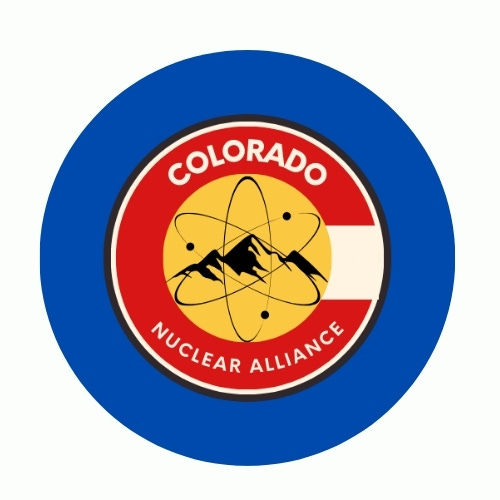
If you are interested in supporting or joining the Colorado Nuclear Alliance, visit their website: Colorado Nuclear Alliance
1 The Fort Saint Vrain [Nuclear] Generating Station was constructed near Platteville as Colorado’s first and only nuclear power plant (so far). The plant operated from 1979 until 1989 and was one of two high temperature gas cooled (HTGR) power reactors in the United States. The primary coolant, helium, transferred heat to a water secondary coolant system to drive a steam generator. The reactor fuel was a combination of uranium and thorium. The relatively small reactor had an electrical power output of 330 MW. The plant design was advanced for its time and was technically successful, especially towards the end of its operating life. As one of the first commercial HTGR designs, the plant essentially served as a proof-of-concept for several advanced nuclear technologies. However, the Fort Saint Vrain [Nuclear] Generating Station had a number of early-adopter issues and maintenance problems. Ultimately, the plant was a commercial disappointment to its owner and was shut down in 1989.
We give you energy news and help invest in energy projects too, click here to learn more
Crude Oil, LNG, Jet Fuel price quote
ENB Top News
ENB
Energy Dashboard
ENB Podcast
ENB Substack
The post Colorado’s First Step Towards Energy Sobriety appeared first on Energy News Beat.
“]]
